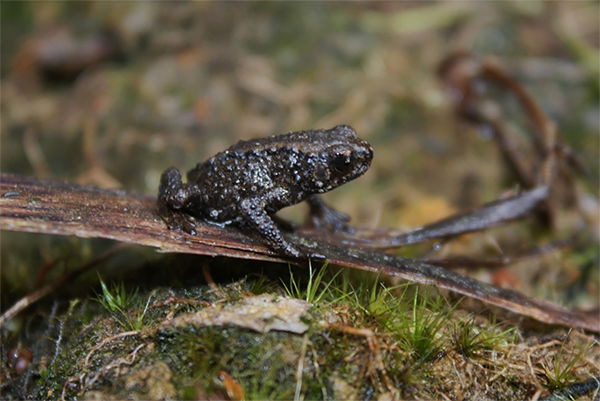Another Unique Amphibian!
Thomas Brown, CC BY 2.0 https://creativecommons.org/licenses/by/2.0, via Wikimedia Commons
Pelophryne
by Inspector Barry Mins on December 21, 2021Hey kids, welcome back to our series on the mysteries of created kinds!
Last week we were introduced to our first amphibian kind, the Parker’s Tree Toad kind. Did anyone find the toad in the picture? If you read carefully last week, you’ll know what I’m talking about. As we wrapped up last week, I gave you all a clue about this week’s created kind. Did anyone figure it out? Let us know!

This week we’re jetting to Southeast Asia. Our kind for the week has twelve species, all found in the Southeast Asian countries of Indonesia, Malaysia, Singapore, the Philippines, and Brunei. If you aren’t sure where those countries are, get your parents to show you on a map. While this kind has a fairly wide range, the toads we’re looking at are tiny. Most species are under an inch in length!1 They live on tree trunks and plant leaves and stems close to water sources. Numerous species are found in mountainous regions.2
This kind has a unique reproductive method. The toads must lay their eggs in water, but that doesn’t mean rivers or lakes. Instead, these amphibians seek out tree holes or even the pitchers of pitcher plants!3 They lay their eggs in these small pools of standing water. When the tadpoles hatch, they are what is called endotrophic.4 This means they do not eat. Instead, they get nutrients from a yolk sac they hatch with.
Did anyone figure it out? Again, tough one this week. This week’s kind is the flathead toad kind of genus Pelophryne. These tiny toads are incredibly unique and highly understudied.
Want to test your knowledge? Try out this crossword puzzle!
Next week we are still looking at amphibians, and we are still in Asia, but not toads this time. Your clue for the week is:
Clue
This kind has two to three species and can live for up to eight years.
Footnotes
- Masafumi Matsui “A new species of Pelophryne from Malay Peninsula (Anura, Bufonidae)” Current Herpetology 38, no. 2 (2019), 128-139.
- Indraneil Das “Two new species of Pelophryne (Anura: Bufoidae) from Gunug Murud, Sarawak (Northwestern Borneo)” Raffles Bulletin of Zoology 56, no. 2 (2008) 435-443.
- Rudolf Malkmus and Jonas Maximilian Dehling “Anuran amphibians of Borneo as phytotelma-breeders—a synopsis.” Herpetozoa 20, no. 3/4 (2008) 165-172.
- T.M. Leong and S.C. Teo “Endotrophic tadpoles of the Saint Andrew’s Cross Toadlet, Pelophryne signata (Amphibia: Anura: Bufonidae) in Singapore.” Nature in Singapore 2, (2009), 21-25.
- © 2025 Answers in Genesis
- Privacy Policy
- Contact
- About


